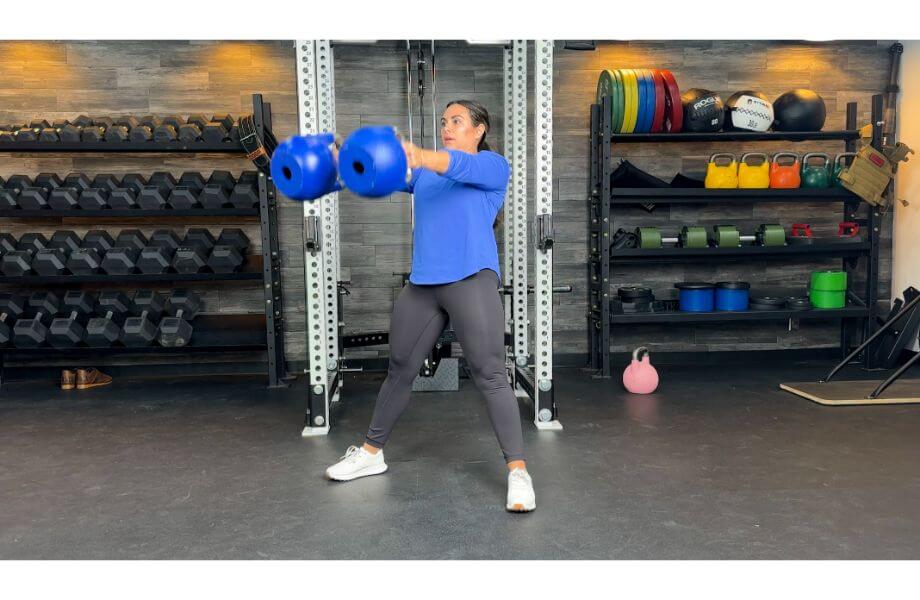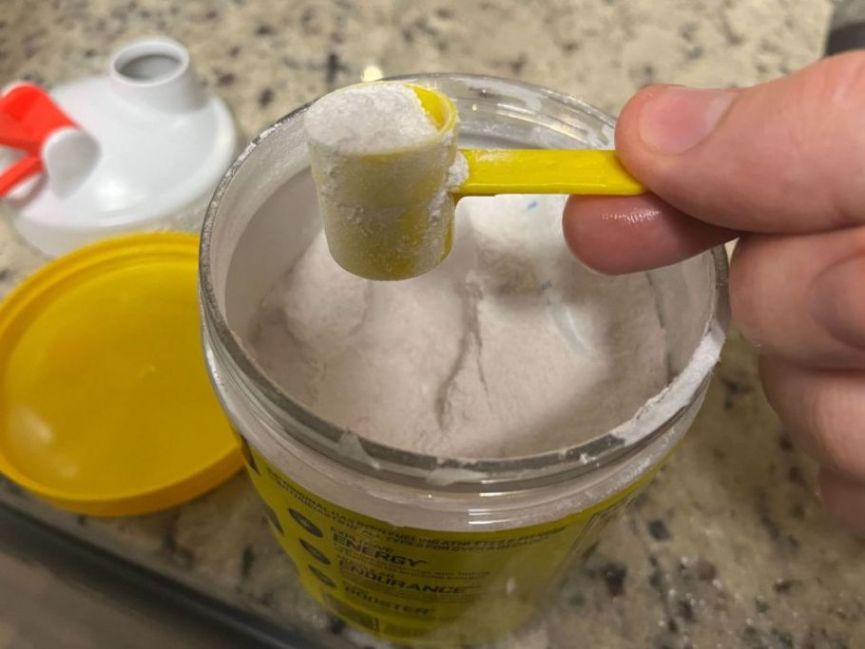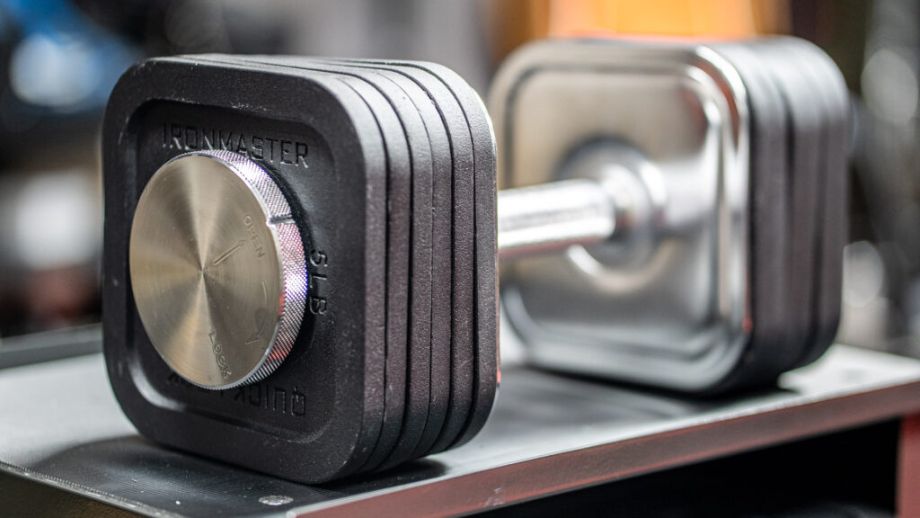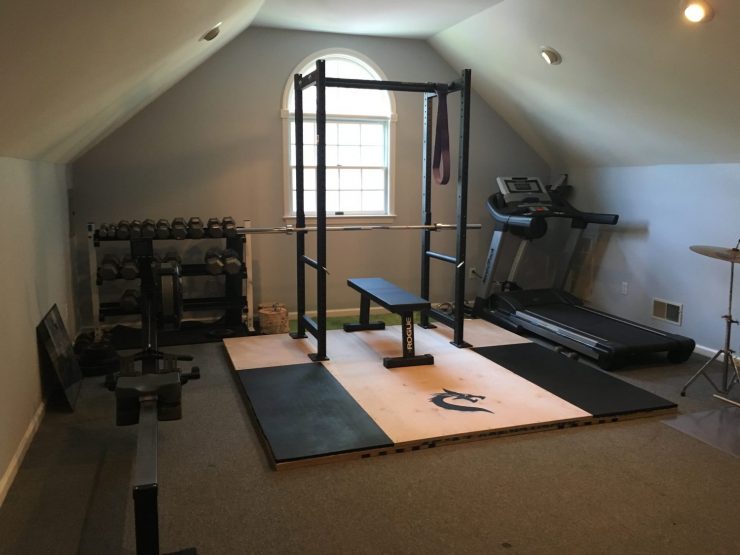Quad exercises hog the spotlight since these muscles are positioned prominently on the front of your legs, but what about the behind-the-scenes superstars: the hamstrings?
You have your hamstring muscles to thank for being able to complete everyday functional fitness activities like standing, walking, crouching, and jumping, which means strong hamstrings will translate to better athletic performance, too.
Your hammies also contribute to greater overall lower body strength, better posture, and a decreased risk of injury. That’s why Caine Wilkes, OLY, USAW-L1, and GGR senior staff writer, covers some of the best hamstring exercises to add to your next leg day workout.
Are you ready to go ham on these killer moves? Read on!
7 Best Hamstring Exercises
From weightlifting classics to compound exercises, our list features the best hamstring exercises for building strength in the biceps femoris, semitendinosus, and semimembranosus.
Check them out!
- Deadlift
- Glute-ham raise
- Good morning
- Kettlebell swing
- Bulgarian split squat
- Hamstring curl
- Hip thrust
Deadlift
The standard deadlift reigns supreme in the weight room, but trading your trusty barbell for a trap bar, resistance band, or two dumbbells is viable for this strength training staple.
The most effective deadlift variations if you’re looking to maximize your hamstring activation are the single-leg deadlift and Romanian deadlifts. According to the International Journal of Exercise Science1, “the [single-leg deadlift] is preferable to the [deadlift] in training the [biceps femoris], and [gluteus medius].”
The Journal of Strength and Conditioning Research2 likewise determined that semitendinosus and biceps femoris EMG activation was observed at its highest during the Romanian deadlift and glute-ham raise exercises.
Why do it: “Deadlifts are an absolute must for strength training or competitive weightlifting programs,” says Caine Wilkes, OLY, USAW-L1, “but they’re also especially great at targeting the muscle groups of the hamstrings, especially the single-leg and RDL variations.”
How to do it:
- Load your barbell, then stand over it with your feet shoulder-width apart.
- Hinge forward and bend your knees to reach down and grip the barbell.
- Drive through your heels to stand, maintaining a flat back and braced core as you lift.
- Squeeze your glutes once you’re at full hip extension.
- Reverse the movement to slowly bring the bar back to the floor.
- Reset and repeat for reps.
RELATED: Best Olympic Barbell
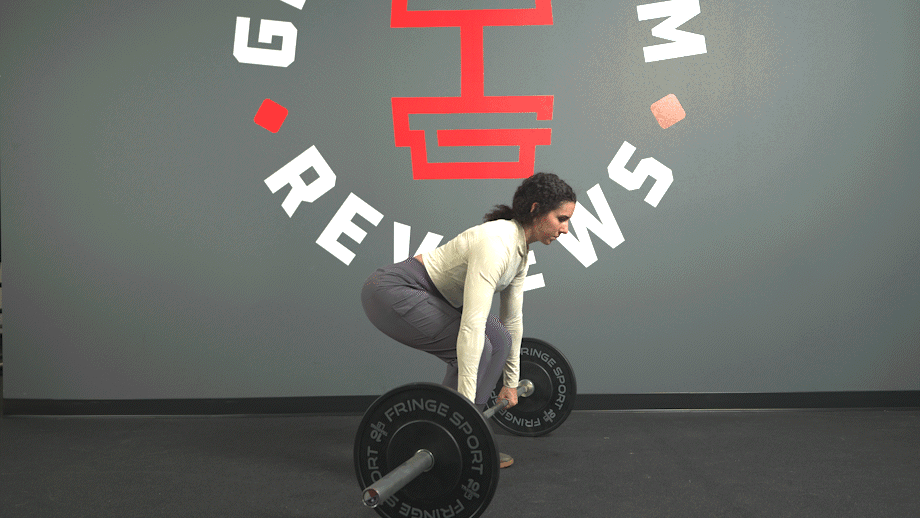
Glute-Ham Raise
The glute-ham raise—sometimes abbreviated as GHR exercise—targets your posterior chain, including your hamstrings, glutes, lower back, and calves.
You may need a GHD machine to perform this exercise, and while most commercial gyms have those, your home gym may not. So, to stave off splurging on one of the best glute machines—if you have the budget, go for it!—the Nordic curl is a solid alternative that can be performed with or without a machine and provides even more isolation to your hamstrings.
Why do it: Studies show2 that the GHR is one of the highest ranking exercises in terms of EMG activation in the hamstrings. If you have a GHD machine at your disposal, the GHR is a must to include in your lower-body workout routine.
How to do it:
- Adjust your GHD machine so your quads are resting on the middle of the support pad.
- Climb into the machine, securing your feet, bending your knees, and keeping a tall torso.
- Slowly straighten your legs, lowering your torso towards the floor.
- Continue until your body forms a parallel straight line with the floor.
- Engage your glutes and hamstrings to pull your body back to the starting position.
- Repeat for reps.
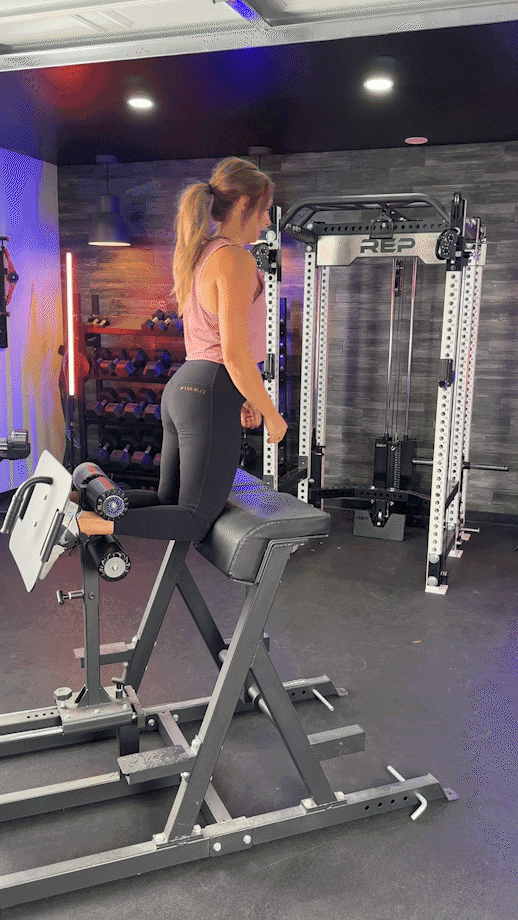
Good Morning
The sky’s the limit when it comes to the good morning exercise. You can perform this movement with a barbell, a resistance band, a dumbbell or kettlebell held in the goblet position, or just your body weight.
Why do it: The good morning is a beginner-friendly movement that targets the posterior chain and provides a massive hamstring stretch as the barbell shifts forward away from your body’s center of mass. Benefits include increased hamstring strength, reduced risk of hamstring injury, and improved core strength and stability.
How to do it:
- Set a barbell on the J-hooks of your squat stand or power rack, load it to the desired weight, and unrack it onto your shoulders just as you would for the barbell back squat.
- Step away from the rack, keeping your feet shoulder-width apart.
- Keeping a slight bend in your knees, push your hips back and lower your chest toward the floor.
- Continue to bring your chest down until it is nearly parallel with the floor. You should feel a strong stretch in the back of your legs.
- Pause, then slowly return to a standing position.
- Reset and repeat for reps.
RELATED: Best Leg Exercises
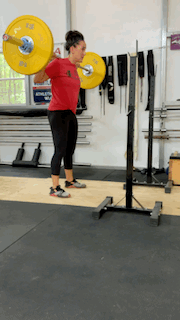
Kettlebell Swing
There are two main versions of the kettlebell swing: the Russian kettlebell swing, which features a range of motion that concludes around shoulder height, and the American kettlebell swing, which requires you to hoist the kettlebell into an overhead position.
RELATED: Russian Kettlebell Swing Vs American
“You’ll get a little more oomph from the American version as far as shoulder activation goes,” says Caine, “but, if the hamstrings are your prime directive, both variations work equally well.”
Why do it: According to the American Council on Exercise3, the kettlebell swing targets a ton of muscles, including the hamstrings, glutes, hip adductors, quadriceps, latissimus dorsi, deltoids, triceps, biceps, forearms, and core. It relies on generating force from a powerful hip hinge, so you’re going to feel it big time in the back of your thighs.
How to do it:
- Grab one of the best kettlebells and hold the handle with two hands in front of your body.
- Slightly bend your knees, angle your torso forward, and thrust your hips forward to initiate the kettlebell’s upward swing.
- Swing the kettlebell to shoulder height for the RKBS or the overhead position for the AKBS. Do not scrunch your neck as the kettlebell reaches the peak position.
- Guide the kettlebell as it swings back down, hinging forward as it passes the starting position and arcs through and behind your legs.
- Thrust your hips forward again to cycle into the next rep.
- Repeat for reps.
RELATED: Kettlebell Leg Workout
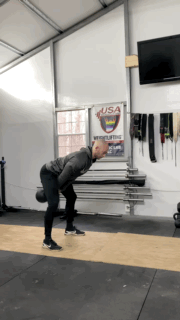
Bulgarian Split Squat
The bodyweight Bulgarian split squat builds strength and size in several leg muscles, including hamstrings, quads, glutes, and calves. You can perform this exercise using a barbell, a pair of the best dumbbells held at your sides, or a kettlebell in the goblet position.
For an alternate movement—if you find the Bulgarian split squat too complicated at first—scale down to the regular split squat before progressing.
Why do it: The Bulgarian split squat targets many of the same muscles as the tried-and-true back squat, but according to the International Journal of Exercise Science4, it does so while minimizing the demands on the knee joint, making it gentler yet similarly effective.
How to do it:
- Stand in front of a flat weight bench (with a barbell resting on your shoulders, two dumbbells held in either hand, or a kettlebell in the goblet position).
- Place the top of your left foot on the bench behind you.
- Bend your right leg to slowly lower yourself to the floor.
- Continue until your right knee forms a 90-degree angle.
- Hold the position, then push through your right heel to stand back up.
- Complete the desired number of reps, then switch so that your right foot is on the bench and your left leg becomes the weight-bearing leg.
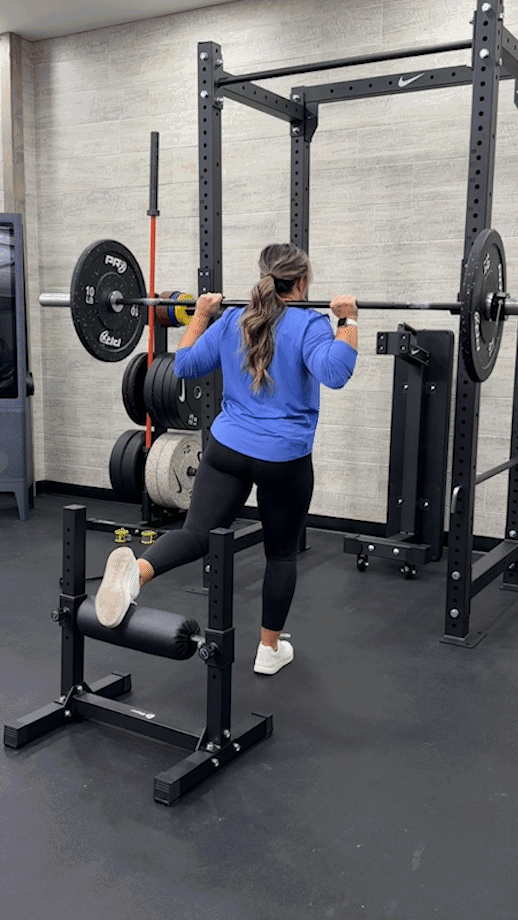
Hamstring Curls
The hamstring curl, also known as the leg curl, typically requires a leg curl machine to perform, but there are many ways to do hamstring curls at home using resistance bands, miscellaneous furniture, and a little ingenuity.
Why do it: “The hamstring curl is an isolation exercise that hits the hammies unlike any other exercise,” says Caine. “It’s definitely a must if you’re prioritizing building hamstring strength and muscle. Plus, it’s a great finisher exercise since it only hits the one muscle group.”
How to do it:
- Adjust the leg curl machine to your specifications and desired weight.
- Sit down, placing your legs over the pads and gripping the handles at your sides.
- Push the pads down and towards your body using your hamstrings.
- Hold the end position briefly and squeeze the contraction.
- Slowly guide the pad back to the starting position.
- Repeat for reps.
RELATED: Best Leg Machines
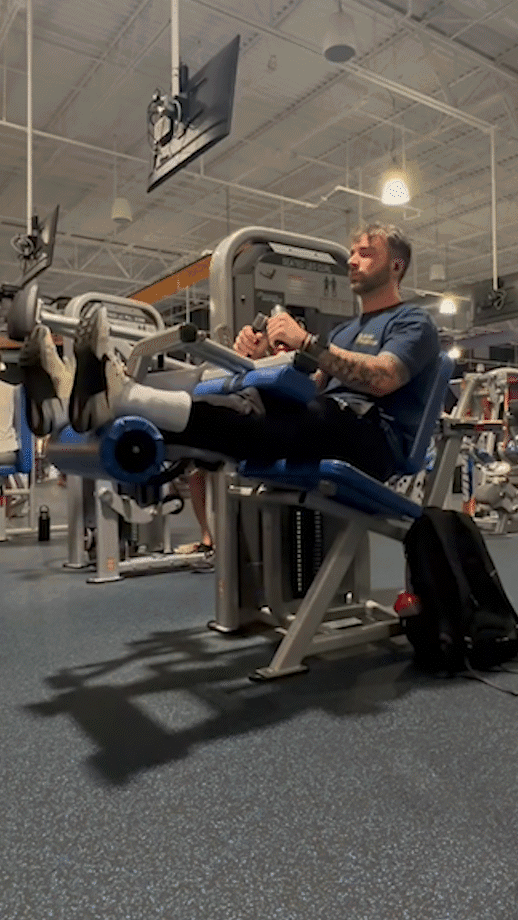
Hip Thrust
The hip thrust is commonly performed with a barbell, but you could sub in a dumbbell or resistance band if that suits you.
For an increased challenge or to correct muscle imbalances, you can convert your hip thrust to a single-leg hip thrust. Likewise, you can decrease the challenge by taking the weight bench out of the equation and doing a from-the-floor classic glute bridge exercise instead.
RELATED: Unilateral Exercises
Why do it: The hip thrust largely targets the glutes, but you’ll also get plenty of hamstring activation. According to PLoS One5, the hip thrust accomplishes this while placing less stress on the lower back than exercises like the deadlift and back squat, making it a godsend for folks with chronic back pain.
How to do it:
- Sit with a weight bench behind your back and a loaded barbell at your feet.
- Roll the bar over your legs until it settles into your hip crease.
- Plant your feet on the floor and bend your knees so they are fully flexed.
- Thrust your hips upward until your upper body and hips form a straight line.
- Squeeze your glutes, then release and slowly come back down.
- Reset and repeat for reps.
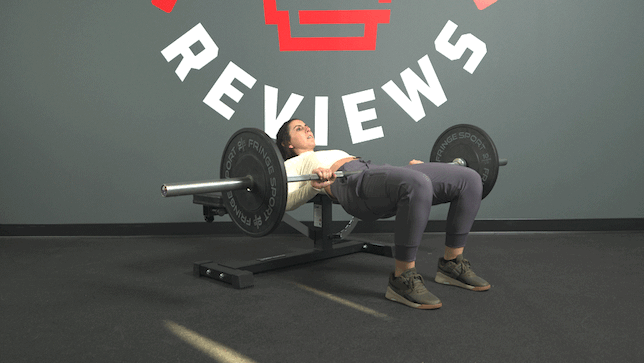
Expert Training Tips
Leg day is one of the most loathed workout splits, but it’s as essential—if not more—than training your other muscle groups. (You’ve seen those “Don’t skip leg day” memes.) You rely on your legs for everyday activities, including walking, jogging, sprinting, jumping, crouching, squatting, and heck, even standing.
Frequency
“Programming at least one leg workout each week is imperative, even if you’re getting some lower body activation during cardio,” advises Caine Wilkes, OLY, USAW-L1. “Cardio, whether steady-state or HIIT, should be useful for many all-purpose gains, but to really build muscle in your hamstrings, there’s no substitute for some old-fashioned strength training.”
According to Muscle & Nerve6, it may take up to 48 hours after training before our larger muscle groups fully recuperate and regain their ability to generate peak torque values. So, it is feasible to program more than one leg workout in a week, so long as you give yourself at least 48 hours between training sessions.
RELATED: Dumbbell Leg Workout
Structure
Our list of the best hamstring exercises answers what you should be doing in the gym, but how is another question entirely.
“Generally speaking, compound and full-body exercises that work multiple major muscle groups should be performed at the beginning of the workout,” says Caine. “You want to hit all of the big lifts while you’re still fresh, then finish with isolation exercises to cash out and clock out.”
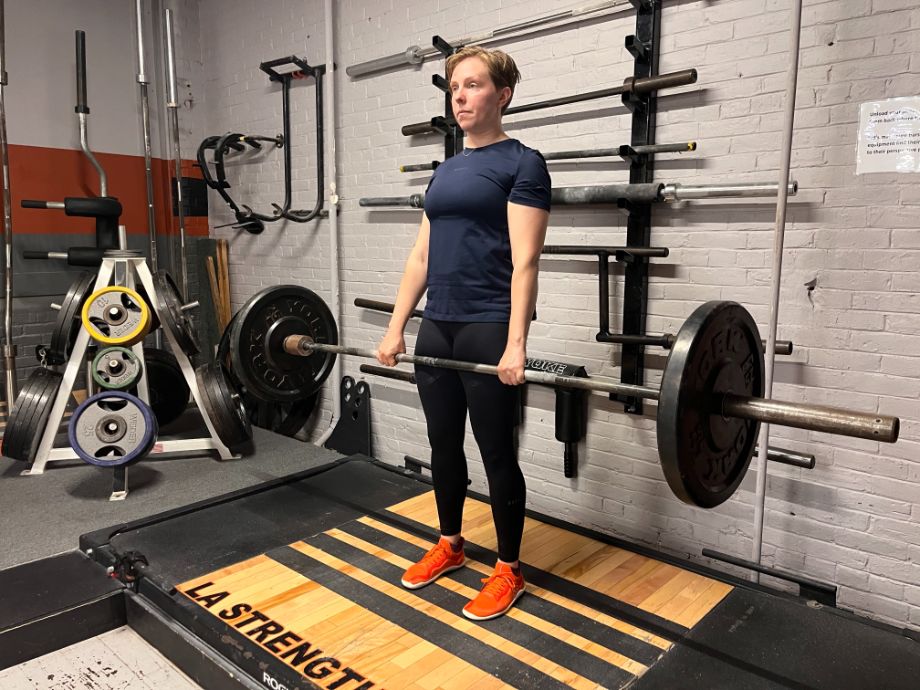
For your hamstring workout, that means leading with the big bruiser moves like the deadlift, Bulgarian split squat, or barbell hip thrust, then closing things out with exercises like the GHR, hamstring curl, or good morning exercise.
Consider working with a certified personal trainer (CPT) or other qualified fitness professional for more personalized programming.
RELATED: Best Online Personal Trainer
Benefits of Hamstring Exercises
Working out your hammies on the reg leads to numerous benefits beyond garden variety gains. Here are a few of those benefits to remind you why it’s important to never skip leg day.
Helps Improve Sprinting Speed
Athletes that regularly sprint, including track and field athletes, baseball players, basketball players, and more, will be pleased to know that regularly performing hamstring exercises may result in improved top-speed performance while sprinting.
A study in Frontiers in Sports and Active Living7 found that there may be a correlation between hamstring strengthening exercises and force production during sprinting, giving credence to the idea that strengthening your hamstrings should translate to improved sprinting.
RELATED: 7 Sprint Workouts
May Help Prevent Injury
The quads love hamming it up since they’re positioned front and center, but what would a set of big quadriceps be without commensurately built hamstrings supporting them in the background?
“Neglecting the hamstrings leads to tightness or discomfort that could contribute to or cause a hamstring injury,” says Caine Wilkes, OLY, USAW-L1. “The hamstrings also work with the quadriceps to assist knee flexion and extension, so there is a risk for developing knee problems as well.”
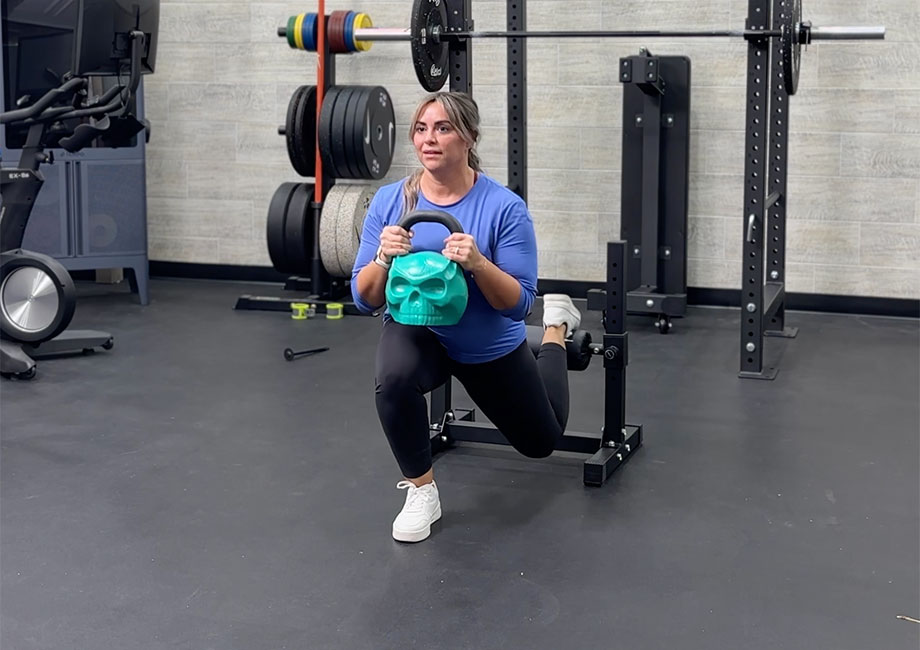
A study in the Journal of Sport Rehabilitation8 explored this relationship and found that hamstring exercises like the Nordic curl may be integral for dodging hamstring and knee flexor injuries.
So, giving both the quads and hammies their due is crucial not just for a balanced appearance, but for functional purposes as well.
Helps Improve Posture and Biomechanics
We weren’t kidding when we praised the hamstrings as the unsung heroes of your body because the hamstrings play a vital role in promoting good posture by supporting the lumbar spine.
Individuals with strong hamstrings and a healthy amount of hamstring flexibility are generally able to achieve a more rigid, upright posture that helps alleviate and prevent chronic conditions such as low back pain.
According to Cureus9, however, weak hamstrings may contribute to “lumbar spine, pelvic, and lower limb movement dysfunction, as well as low back pain and abnormal gait.” Recent findings indicate that tight hamstrings may lead to pronation of the foot, which could lead to injuries and conditions of the foot and lower leg, including shin splints, heel pain, plantar fasciitis, and more.
RELATED: Shin Splint Stretches
Regularly performing hamstring strengthening exercises contributes to increased hamstring strength and flexibility, helping combat these negative effects, reduce your risk of injury, and lead to an overall higher quality of life.
How To Warm Up for a Hamstring Workout
The best warm-ups involve elevating your heart rate, getting your blood flowing, lengthening the target muscle groups, and rehearsing the general movement patterns you’re about to use during your working sets.
According to the Journal of Human Kinetics10, dynamic movement tends to be favorable before high-intensity exercise versus static stretching. So, for our hamstring workout, think leg swings, lunges, bodyweight squats, and good mornings.
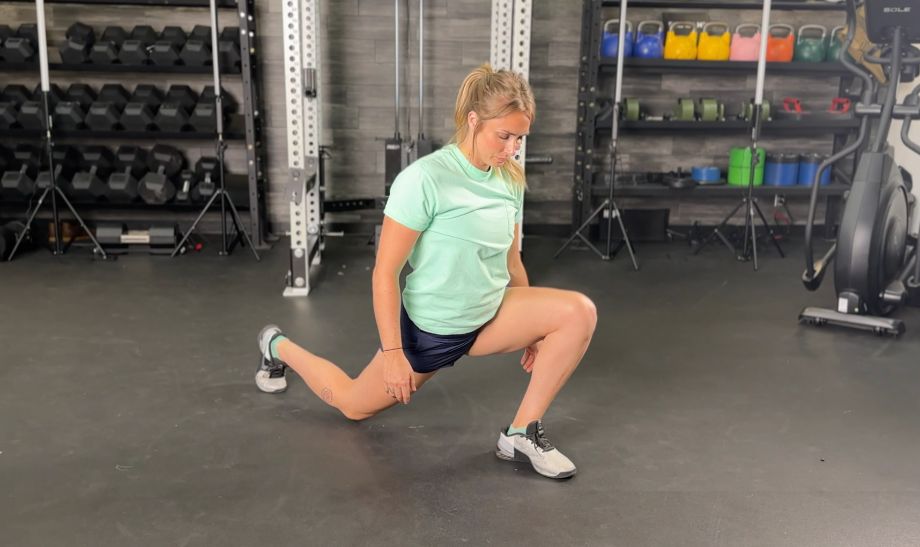
“It’s never a bad idea to do a few light sets before getting into your working weight, too,” says Caine. “For example, if you’re aiming to lift 225 pounds or more on your deadlift, a few reps at 135 or 185 can’t hurt.”
A little light cardio also works well to warm up the hamstrings. Jogging, cycling, and rowing are all viable; just be sure not to overdo things if you’re planning on hitting the weights right after. Nothing’s worse than accidentally cashing out during the warm-up and finding out the hard way that you have nothing left in the tank.
RELATED: Best Warm-Up Exercises
Programming the Best Hamstring Exercises
Armed—or legged, in this case—with the best hamstring exercises written in your training journal, you’re ready to go. The amount of hamstring exercises you should perform each leg session, along with your sets and reps, will depend on your fitness goals.
- For hypertrophy: Choose 2 to 3 hamstring exercises and perform 3 to 4 sets of 8 to 12 repetitions.
- For endurance: Choose 1 to 3 hamstring exercises and perform 2 to 4 sets of higher reps; aim for 10 to 15 reps for exercise.
- For strength: Choose 1 to 2 hamstring exercises and perform 3 to 5 heavy sets of 5 to 8 reps.
Best Hamstring Exercises: FAQs
What is the best exercise for your hamstrings?
Our list contains seven of the best hamstring exercises to include in your future hamstring workouts: the deadlift, glute-ham raise, good morning, kettlebell swing, Bulgarian split squat, hamstring curl, and hip thrust exercises.
Useful variations of these top hamstring exercises include the Romanian deadlift, Nordic curl, split squat, and glute bridge.
How can I build my hamstrings fast?
Incorporating our recommended hamstring exercises is a great step in the right direction towards building your hamstrings fast, but what you do outside the gym is equally, arguably more important.
Give yourself your best chance for success by performing hamstring exercises regularly, allowing adequate recovery time between training sessions, getting plenty of sleep, drinking enough water, and taking some of the best supplements for muscle growth.
What is the best lift for hamstring growth?
According to the Journal of Strength and Conditioning Research2, the Romanian deadlift and glute-ham raise ranked as the best exercises in terms of hamstring EMG activation.
That said, there are many excellent hamstring exercises that may be used towards the goal of hamstring hypertrophy (check out our full list), provided your programming utilizes an appropriate rep scheme and volume.
RELATED: Hypertrophy Workout 101
References
1. Diamant W, Geisler S, Havers T, Knicker A. Comparison of EMG Activity between Single-Leg Deadlift and Conventional Bilateral Deadlift in Trained Amateur Athletes – An Empirical Analysis. Int J Exerc Sci. 2021;14(1):187-201. Published 2021 Apr 1.
2. McAllister MJ, Hammond KG, Schilling BK, Ferreria LC, Reed JP, Weiss LW. Muscle activation during various hamstring exercises. J Strength Cond Res. 2014;28(6):1573-1580. doi:10.1519/JSC.0000000000000302
3. 1. McCall P. Do It Better: ACE’s Technique Series Continues With the Two-handed Kettlebell Swing. ACE. October 2015. Accessed February 7, 2024.
4. Mackey ER, Riemann BL. Biomechanical Differences Between the Bulgarian Split-Squat and Back Squat. Int J Exerc Sci. 2021;14(1):533-543. Published 2021 Apr 1.
5. Otsuka M, Honjo T, Nagano A, Isaka T. Kinetics in lumbosacral and lower-limb joints of sprinters during barbell hip thrust compared to deadlift and back squat. PLoS One. 2021;16(7):e0251418. Published 2021 Jul 1. doi:10.1371/journal.pone.0251418
6. Ferreira DV, Gentil P, Soares SRS, Bottaro M. Recovery of pectoralis major and triceps brachii after bench press exercise. Muscle Nerve. 2017;56(5):963-967. doi:10.1002/mus.25541
7. Prince C, Morin JB, Mendiguchia J, et al. Sprint Specificity of Isolated Hamstring-Strengthening Exercises in Terms of Muscle Activity and Force Production. Front Sports Act Living. 2021;2:609636. Published 2021 Jan 21. doi:10.3389/fspor.2020.609636
8. Medeiros DM, Marchiori C, Baroni BM. Effect of Nordic Hamstring Exercise Training on Knee Flexors Eccentric Strength and Fascicle Length: A Systematic Review and Meta-Analysis. J Sport Rehabil. 2020;30(3):482-491. Published 2020 Oct 12. doi:10.1123/jsr.2019-0388
9. Gulrandhe P, Yadav V, Naqvi WM. Correlation Between Foot Posture and Hamstring Muscle Tightness. Cureus. 2023;15(7):e42046. Published 2023 Jul 17. doi:10.7759/cureus.42046
10. Zmijewski P, Lipinska P, Czajkowska A, Mróz A, Kapuściński P, Mazurek K. Acute Effects of a Static Vs. a Dynamic Stretching Warm-up on Repeated-Sprint Performance in Female Handball Players. J Hum Kinet. 2020;72:161-172. Published 2020 Mar 31. doi:10.2478/hukin-2019-0043


